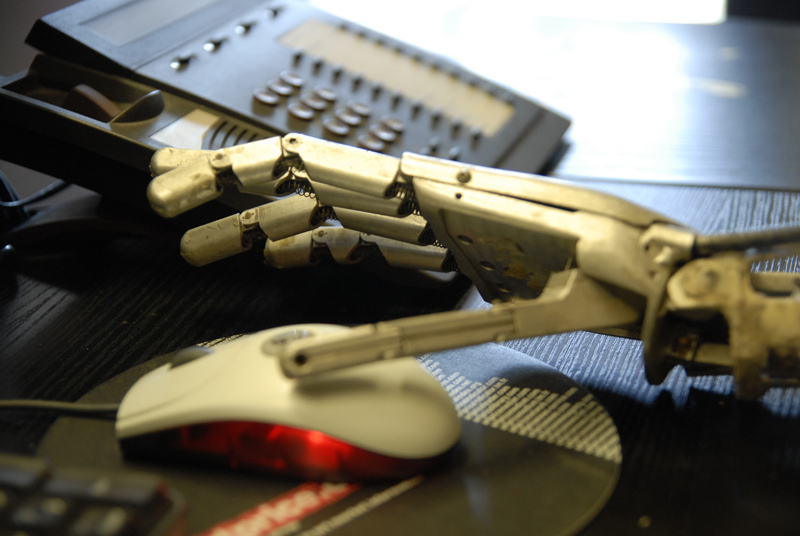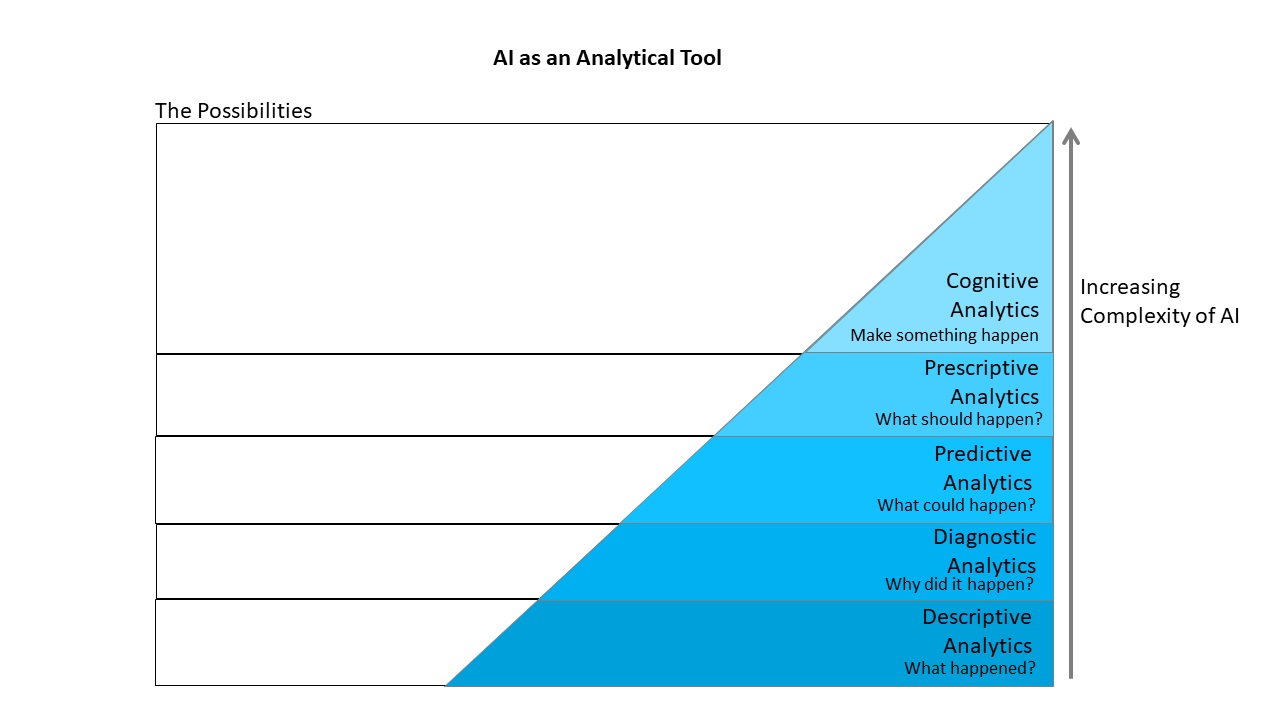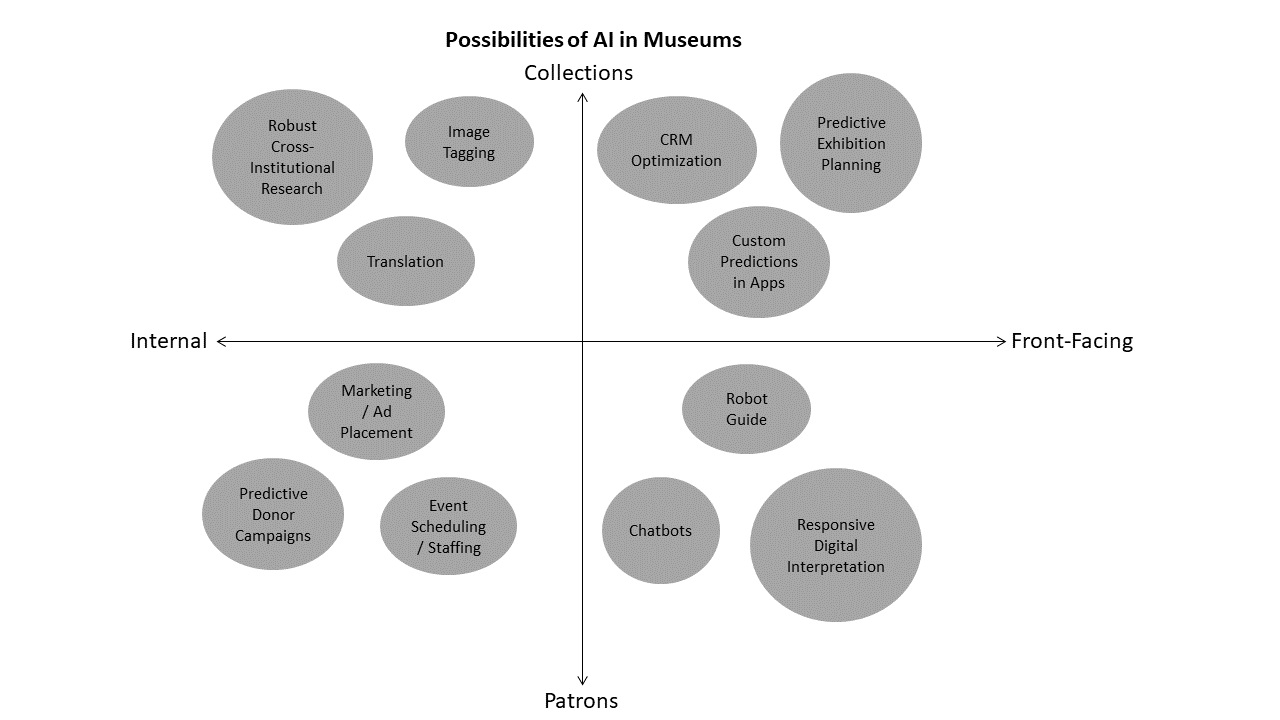
What is AI? How does it impact our lives every day? How are museums already using it? How might they use it in the future?
This post, one of three on the topic of artificial intelligence in museums, introduces the technology and answers those questions, with information pulled from a live convening I attended.
The Knight Foundation and the American Alliance of Museums hosted this series of convenings about technology topics at museums around the country this fall. Rob Stein, AAM’s Executive Vice President & Chief Program Officer, approached the AAM Media and Technology Professional Network to help conceptualize these events. After much discussion, the M&T working group identified two large areas of focus: Experience/Immersion, and Data/Artificial Intelligence. The convening I cover in these posts, on the theme of Museums and New Intelligences, took place in November at the Pérez Art Museum in Miami.
Introduction
Though technology can be confusing to grasp, plagued with alphabet soup syndrome and obfuscating jargon, its ramifications can be transformative. One emerging technology, artificial intelligence (AI), or the use of technology to see patterns, has the potential to vastly improve every aspect of the museum experience. With thought and care, museums can use the technology to implement their greatest promise for society, articulated beautifully by Chris Barr of the Knight Foundation:
What is a transformational experience? How do you create meaning in people’s lives? At the core of our cultural institutions this is our work. @knightfdn @heychrisbarr
— Seema Rao __ Brilliant Idea Studio (@artlust) November 1, 2018
What is the link between AI and transforming people’s lives? AI analyzes aggregated data. As Kristen Summers, Technical Delivery Lead for Watson implementations in the Public Sector at IBM, puts it:
The machine has no sense of true in an objective sense. The truth value comes from the people who put in the data. @IBMWatson #MuseumsandAI
— Seema Rao __ Brilliant Idea Studio (@artlust) November 1, 2018
AI helps people solve problems better and faster. Its possibilities can only come to fruition if the data required is saved and aggregated, and if practitioners explore the myriad uses in their work. So, what are the uses of AI in museum work?
AI Isn’t about Replacing People
Artificial Intelligence (AI) is the use of technology to analyze data and see patterns. AI can feel philosophically antithetical to museum work, since museums are spaces that value authenticity and verifiable knowledge so highly. Before thinking of the possibilities for AI in the field, it is worth facing these possible objections.
Museums are in the business of knowledge. Collections are at once repositories of knowledge and catalysts of future knowledge-making. Education programs and exhibitions are ways that museums share knowledge. Even the operations side is run based on the accrued knowledge of how visitors act and what collection spaces need. However, in each aspect of museums, human knowledge is hard won. The idea that machines can somehow replicate this type of knowledge without the effort is jarring.
But AI, at least right now, isn’t about machines replacing humans. AI is a way that humans use machines to improve their work. People need to aggregate human knowledge to create digital systems which make more of that knowledge. Any tool that makes more of knowledge is good for knowledge workers.
With access to this kind of digital system, museum workers would be able to refine their approach and cast a wider net. For example, think of the labors required to develop a checklist for an exhibition. Let’s use the example of Chinese blue and white porcelains. Between the fourteenth and eighteenth century, billions of pieces of these iconic ceramics were produced, some for use domestically and others to sell to far-flung lands. The curator’s work might be to cull from the vast number of global collections, look through every depiction of blue and whites in visual media, and explore every written description of lost or destroyed objects and collections. AI could do much of the groundwork to aggregate and compare object images, visual media, and textual sources. The curator could then spend their energy making meaning, rather than looking for sources from which to extract that meaning.
The question of AI in museums is not if but how. Some museums are already testing the waters. The National Gallery is improving operations and visitor forecasts with help from the firm Dexibit. Patrons are encountering chatbots, such as in the Akron Art Museum’s recent Dot project. The Norwegian National Museum is employing AI to compare and tag images. Let’s consider other ways that museums are currently using AI, and future possibilities for it.
Museums are Already Using AI
While looking to peers can be helpful for museum professionals in understanding how they can use AI, they also need to understand the breadth of the technology, which is far greater than what is currently in use. For example, technology can mine visual and textual data for numerous functions including content extraction, classification, machine translation, text generation, image recognition, machine vision, and speech-to-text. Many of the functions supported by AI overlap. For example, chatbots draw on many types of AI, including content extraction, text generation, predictive analytics, and sentiment analysis. This vast array of options can be overwhelming.
Social media managers are probably the people in the field most aware of AI. Social feeds are filtered by AI, Facebook and Google ad suggestions are generated by AI, and Facebook’s auto-tagging feature for photos is run with AI. Smart museum social media managers harness these AI systems to optimize their approach to best reach their audience. But, AI does not solely touch museums through social media services.
Museums are already immersed in AI technology, though often without realizing it. Most museum professionals use half-a-dozen AI-enabled services every day. Email is free from the scourge of SPAM thanks to AI-enabled filters. Gmail users have the added benefits of automatic email classification and predictive text replies. Museum credit cards are protected from fraud thanks to the AI that credit card companies employ to sift through billions of transactions. Near the end of the fiscal year, most museum educators are wildly spending down budgets to stock up for the upcoming year. If they use Amazon for these purchases, their recommended purchases are fueled by AI. If you use Apple or Google maps to decide on the fastest way to an offsite meeting, AI is churning through loads of traffic data to plan your route and show you red zones on the map to avoid. Anyone who sends museum images to Google Photos has seen the power of AI in automatically tagging images. Most museum professionals have used AI-fueled translation services when reading an email or website in a foreign language. Basically, all outside technology-enabled tools are employing AI.
Why Museum Professionals Must be Aware of AI
Why is understanding the landscape of AI important for museum professionals? First, these corporate tools affect every patron of every museum, so ignorance of AI is poor business practice. Museum professionals can make exemplary exhibitions and labels, but without understanding the impact of AI systems on patrons accessing information, we could find ourselves with a dampened reach. Every moment, from the first awareness of the museum, to walking into the building, to likes on the patron’s Facebook post, is affected by AI.

What’s next for museums and AI? How can AI positively impact the essence of museums? It is important for all museum professionals to consider the possibilities for this field. You can start by looking at the forms of analysis used in the work we do and compare them with the possibilities of AI. For example, much of our work is descriptive catalog data for collection objects. But compared to what’s possible with AI, this data does not provide higher level conclusions. Many of the higher forms of analytics are being done every day in museums, however. Other forms of descriptive data in museums can be on attendance or electricity usage. Think about if you are budgeting for security needs for a future exhibition. You are using descriptive data (probably stored in spreadsheets) and diagnostic data from your security staff to decide the least amount of money required to effectively staff exhibitions in the next five years. That type of prediction would be easier to make correctly if you had more robust sources of aggregated and analyzed knowledge. Working through the descriptive analysis diagram from your own field can be incredibly helpful and empowering. The future is less scary when you know what’s coming. Start by thinking about each decision you make and what information drives those decisions. Then, consider how deeper information might be garnered through AI.

That said, for many museum professionals the distant future is hard to imagine when it isn’t framed within the norms of museums. Comprehending the endless possibilities can be overwhelming. Consider the two largest concerns of museums: collections and visitors. There are numerous ways that we can do the real work of museums better with AI. With cross-institutional collection data, we can develop unexpected theories and new connections. Natural language processing can help find new connections between archival documents. Machine vision can make collection databases more searchable. Connecting collections to visitors is now usually based on anecdotal staff experience, and rarely cataloged in databases. If that data was captured, and even shared across collections, our whole field would be infinitely more able to connect to patrons. AI, in other words, is not the opposite of the work of museums. Instead, AI is the way museums will do their work better.
To learn more about this event, please see: Museums and New Intelligences.









There can also be a dark side to AI with it reflecting prejudices found in society. We have to be mindful that AI can learn for example behaviour that might be racist, sexist or homophobic and it doesn’t have a moral compass.
Watch this great presentation for more on this: https://www.museumnext.com/insight/stories-fighting-fascist-ais/